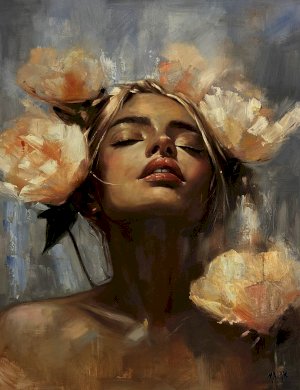
Art has long been considered more than just an aesthetic pleasure; it is increasingly recognized as a valuable asset. At London Art Exchange (LAX), we understand the intricacies and potential of acquiring art for financial and personal growth. This comprehensive guide will explore various aspects of acquiring art, from the basics for newcomers to the specifics of contemporary art, art acquisition funds, and more.
Acquiring Art
Acquiring art can be a rewarding endeavor, both personally and financially. Art has the potential to increase in value over time, offering a way to diversify one’s holdings. However, it is not without challenges and risks. Understanding the market, the value of individual pieces, and the broader economic context is crucial for making informed decisions.
How to Start Acquiring Art in 2025
For newcomers, acquiring art might seem complex, but it can be an enriching journey with the right knowledge and approach. Here are some steps to consider:
- Educate Yourself: Learn about different art movements, styles, and artists. Attend exhibitions, read art books, and stay informed about art trends.
- Set a Budget: Define how much you are comfortable allocating to art acquisitions. Consider it a long-term commitment.
- Seek Guidance: Consult with art advisors or galleries like LAX, which can provide insights into market trends and notable works.
- Start Small: Begin with affordable pieces, such as works by emerging artists with potential for growth.
- Diversify: Just like in financial planning, diversification is key. Explore different artists, styles, and mediums.
In 2025, art remains an attractive asset due to the growing global interest in cultural property, the stability of art prices compared to other markets, and the increasing accessibility of art acquisition through digital platforms.
Fine Art: A Valuable Asset
Fine art, known for its quality and uniqueness, remains a popular choice for collectors. While fine art can appreciate in value, it requires a discerning eye and a deep understanding of the market.
Benefits of Fine Art Acquisition:
- Potential Appreciation: Historically, fine art has shown strong growth rates.
- Tangible Asset: Unlike financial instruments, art is a physical asset that can be enjoyed.
- Resilience to Inflation: Art often retains its value or appreciates during times of economic uncertainty.
Considerations When Acquiring Art
When acquiring art, it is essential to evaluate several factors to make informed choices:
- Authenticity and Provenance: Verify the artwork’s authenticity and ownership history.
- Artist’s Market Performance: Research the artist’s exhibition history and market performance.
- Condition and Quality: The condition of the artwork significantly impacts its value.
- Market Trends: Stay updated on art market trends to align with current demands.
- Buy from Trusted Sources: Engage with reputable galleries, auction houses, or directly with the artist.
Building an Art Collection
Building an art collection involves thoughtful curation and planning. A well-rounded collection can offer personal enjoyment while holding the potential for financial benefits.
- Focus on Quality: Prioritize a few high-quality pieces over numerous average ones.
- Continual Learning: Stay informed about artists and market developments.
- Build Relationships: Establish connections with galleries, artists, and fellow collectors.
- Maintain Records: Document acquisitions with receipts, provenance, and condition reports.
Art Acquisition Funds
Art acquisition funds offer an option for those seeking a hands-off approach. These funds pool resources to acquire high-value artworks, managed by professionals.
Benefits of Art Funds:
- Diversification: Access to a broad portfolio of artworks.
- Expert Management: Managed by professionals with extensive art market expertise.
- Accessibility: Provides exposure to high-value artworks without direct purchase.
Acquiring Art in the UK
The UK art market is one of the most vibrant globally, offering access to prestigious galleries, auctions, and a robust regulatory framework.
Highlights of Art Acquisition in the UK:
- Prestigious Auctions: London hosts some of the world's most celebrated auctions.
- Cultural Hub: London boasts a rich history and dynamic contemporary art scene.
- Legal Protections: The UK offers a well-regulated art market with robust protections for transactions.
Why Consider Acquiring Art?
Acquiring art offers more than just financial potential it provides cultural value and personal fulfillment. Reasons to consider art include:
- Diversification: Art complements other forms of asset ownership.
- Potential for Appreciation: Many artworks increase in value over time.
- Cultural Enrichment: Art enriches your life aesthetically and emotionally.
- Tangible Asset: Art is a physical asset with intrinsic value.
Contemporary Art
Contemporary art continues to gain attention for its cultural relevance and growth potential. Investing in emerging and mid-career artists often presents opportunities for significant appreciation.
Affordable Art Opportunities
Affordable art can provide an accessible entry point for new collectors. Explore works by emerging artists, limited edition prints, and pieces available through local art fairs or online platforms.
Protecting Your Art
Art ownership involves safeguarding your collection through proper storage, insurance, and regular condition assessments. With inflation and market volatility, maintaining the value of tangible assets like art becomes increasingly important.
Supporting Emerging Artists
Acquiring works from emerging artists can be both financially and emotionally rewarding. At LAX, we champion new talent, such as Becky and Mr. Phantom, who create compelling works at accessible price points.
Disclaimer
Acquiring art involves risks, including market fluctuations and illiquidity. While art can be a valuable asset, financial returns are not guaranteed. It is advised to consult with experts and conduct thorough research before making significant acquisitions.
In conclusion, acquiring art offers a unique combination of cultural enrichment and the potential for long-term value. Whether you are new to the market or an experienced collector, London Art Exchange (LAX) provides a curated selection and expert advice to help you navigate the world of art. With careful planning and a passion for art, you can build a collection that is both personally rewarding and holds the potential for future growth.





